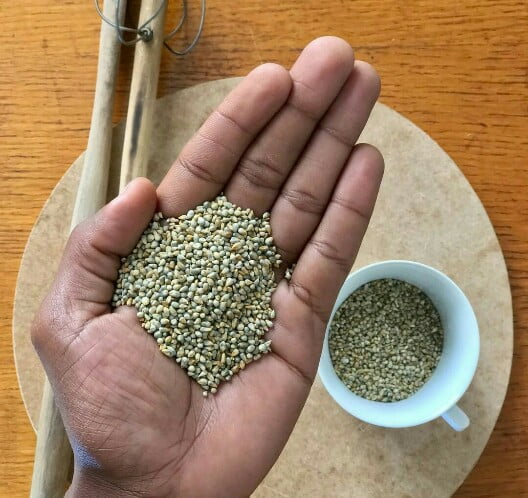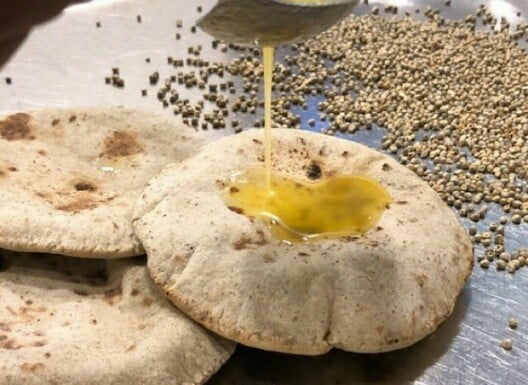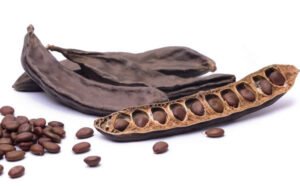Pearl millet is a nutritious cereal crop that originated from Africa.
The scientific name is Pennisetum glaucum, and it belongs to the Poaceae family. This millet is commonly called “Gero” (Nigeria), “Bajra” (India), and “Petit mil” (French).
The millet is inexpensive, drought-resistant, and grows well in low rainfall, poor soil, and high temperatures. It is one of the five most important kinds of cereal (rice, hungry rice, maize, sorghum, and millet) grown in the tropics.
It is rich in energy, dietary fiber, zinc, iron, and antioxidants. Also, it is particularly useful as a weaning food for infants and as a galactagogue for lactating mothers.
Increasingly, it is becoming a better alternative to wheat for diabetics. Some of its other health benefits include; improving heart function, digestive regularity, and enhancing weight loss.
Nutrition Facts of Pearl Millet
100 grams of raw Pearl millet contains:
- Protein: 11 grams (g)
- Moisture: 12 g
- Energy: 363 Kilocalories
- Carb: 67 g
- Dietary fiber: 11 g
- Fat: 5 g
- Zinc: 3 milligrams (mg)
- Iron: 8 mg
- Phosphorus: 296 mg
- Potassium: 307 mg
- Calcium: 42 mg
- Magnesium: 137 mg
- Folate: 46 micrograms (mcg)
- Vitamin A: 132 mcg
- Thiamin (Vitamin B1): 0.3 mg
- Riboflavin (Vitamin B2): 0.2 mg
- Niacin (Vitamin B3): 3 mg
Health Benefits of Pearl Millet
Pearl millet has the following health benefits:
1. Promotes Heart Health

Pearl millet has a high magnesium and potassium content, making it an ideal food for people with high blood pressure.
It contains about 34% and 8% of the recommended daily intake (RDI) of magnesium and potassium respectively in 100 grams.
Research has shown that magnesium lowers the blood pressure of people with hypertension. Potassium, on the other hand, reduces the effect of sodium in the body, which ultimately reduces the body’s blood pressure.
This nutritious millet also normalizes cholesterol levels in the blood.
2. Manages diabetes
The millet had a low glycemic index of 55 when compared with sorghum, finger millet, and mung bean – Low glycemic index foods cause your blood sugar to rise gradually, not quickly, after eating them.
Foods with a low glycemic index reduce insulin response and improve low-density lipoproteins (LDL) levels in the body which is useful for preventing diabetes and other metabolic disorders.
Also read: 10 Surprising health benefits of Guinea corn (Sorghum)
3. Prevents cancer
Pearl millet contains omega-3 fatty acids and antioxidants. Its antioxidant component is mostly phenolic compounds, especially flavonoids.
Antioxidants play an important role in the body’s defense system against harmful by-products in the body.
Studies have reported the number of phenols in pearl millet grains as 608.1mg/100g and that in pearl millet flour as 761mg/100g. The whole grain millets contain more phenols concentrated in the outer pericarp and testa of the seed.
4. Prevents anemia
Pearl millet contains high amounts of iron and zinc, which may help increase the production of hemoglobin in the blood.
However, the presence of non-nutrients, like phytates and polyphenols, may inhibit the bioavailability of iron.
However, if the millet is soaked and fermented, the bioavailability of zinc will increase as the levels of non-nutrients will reduce.
5. Prevents celiac disease
This millet is also ideal for people with celiac disease. Celiac disease occurs in the small intestine of gluten-intolerant individuals, where it interferes with the body’s ability to absorb the nutrients from the food you eat.
It is gluten-free and retains its alkaline properties after cooking, which is suitable for people with wheat, barley, or rye allergies.
6. Promotes digestive regularity
Due to its high water and fiber content, pearl millet prevents constipation and ensures a healthy digestive tract.
Pearl millet is also known to reduce the risk of gallstone occurrence. The insoluble fiber content in millet minimizes the production of excessive bile in our system. An excessive amount of bile secretion in our intestine often leads to aggravating the condition of gallstones.
Also read: 15 African foods high in dietary fiber
7. Promotes weight loss
Pearl millet promotes weight loss because of its high fiber content. Due to its fiber content, it gives a feeling of satiety for a longer period by helping the grain to move slowly from the stomach to the intestine, thus preventing overeating.
Also read: 50 African foods to help you lose weight.
8. Provides Energy
Gero is a good source of energy. It provides about 363 KCal of energy per 100 grams, which is comparable with commonly consumed cereals like wheat (346KCal/100 grams) and Rice (345KCal/100 grams).
It also provides a good amount of protein, fatty acids, minerals, vitamins, dietary fiber, and polyphenols.
Typical millet protein contains a high quantity of essential amino acids, especially sulfur-containing amino acids (methionine and cysteine). Gero is considered one of the best cereal plant-based protein sources.
9. Protects Gut Health
Pearl millet may help prevent stomach ulcers. Stomach ulcers are caused by excess acidity in the stomach after food intake.
It is one of the very few foods that retains its alkalinity after cooking, and this helps to make the stomach alkaline, thus preventing stomach ulcers.
10. Great weaning and lactation food
Pearl millet is a great weaning food for infants from 6 months of age. However, it should be combined with vegetables, legumes, and fruits to give your baby a balanced diet.
Bajra is also good for lactating mothers as it is a good source of energy and is dense with vitamins, and minerals.
Millet also acts as a potent galactagogue, as it is known to increase lactation in nursing mothers.
Also Read: Surprising Health Benefits of Akamu (Ogi) for you and your Baby
Culinary Uses of Pearl Millet

Pearl millet is the main staple in many countries in Africa and Asia.
In Nigeria, it is soaked, fermented, and ground together with sorghum or maize to make a nutritious weaning food called “Ogi” or “Akamu”. Nursing mothers also take ogi to improve lactation.
In Kenya, a similar porridge called “Uji” is made from pearl millet and sorghum.
In the northern parts of Nigeria, it is often ground into flour and rolled into large balls (Fura). After, it is parboiled and liquefied into a watery paste using fresh fermented milk. It is finally consumed as a beverage called “Fura da nunu”
In some parts of Nigeria, Ghana, Niger, and Namibia a beverage, called “Kunu” is made from soaked, fermented, and ground pearl millet. It is often spiced up using ginger, cloves, and cinnamon. It is also good for lactating mothers.
In India, bajra is commonly used to make flatbreads (bhakri) and a Tamil porridge called “Kamban choru”. It is also sprouted and eaten as a relish.

The Bottom Line
Pearl millet is highly nutritious and a rich source of energy for every age and class.
However, to benefit from its numerous health benefits, the whole grain, complete with its pericarp and testa should be utilized.
It is recommended that more millet-based food products should be developed.
Traditional recipes like fermented Ogi (Akamu) should be promoted for diabetics, infants, children, lactating mothers, convalescents, and the elderly.
Get new free and exclusive health tips delivered straight to your inbox!



